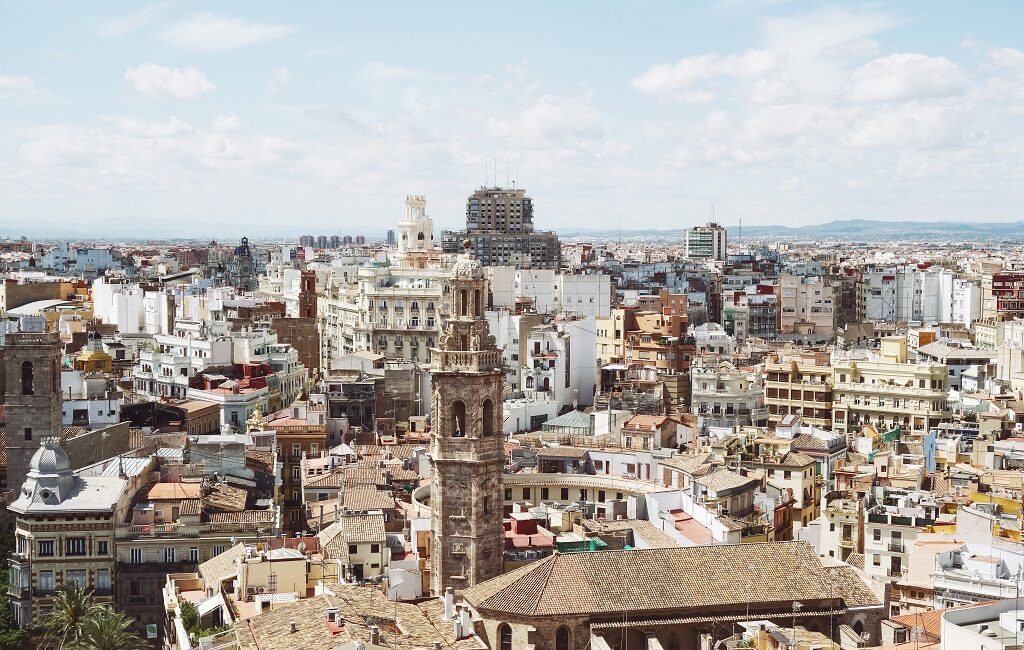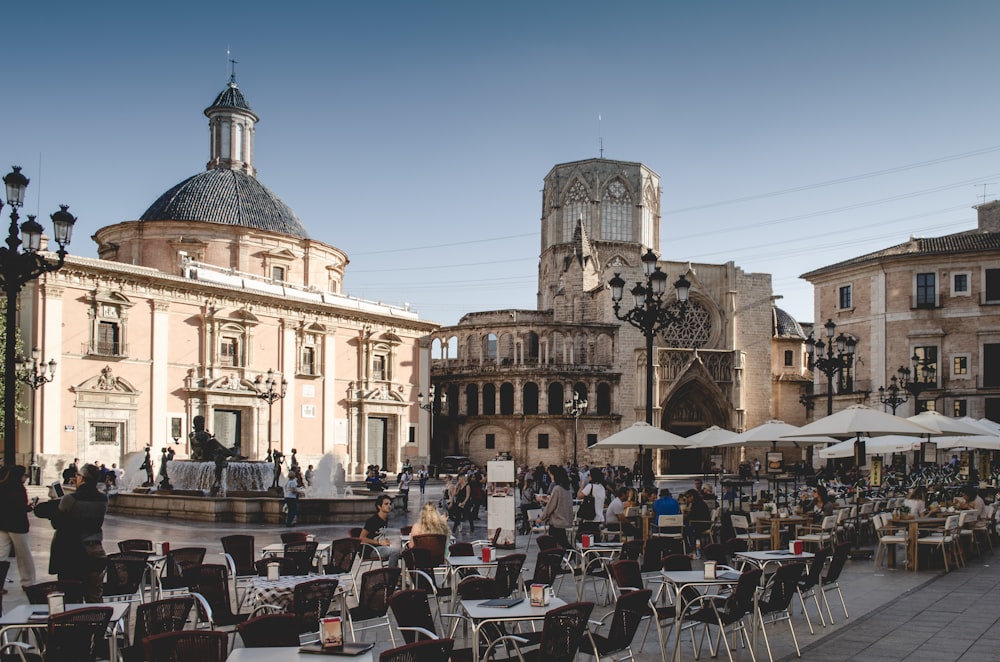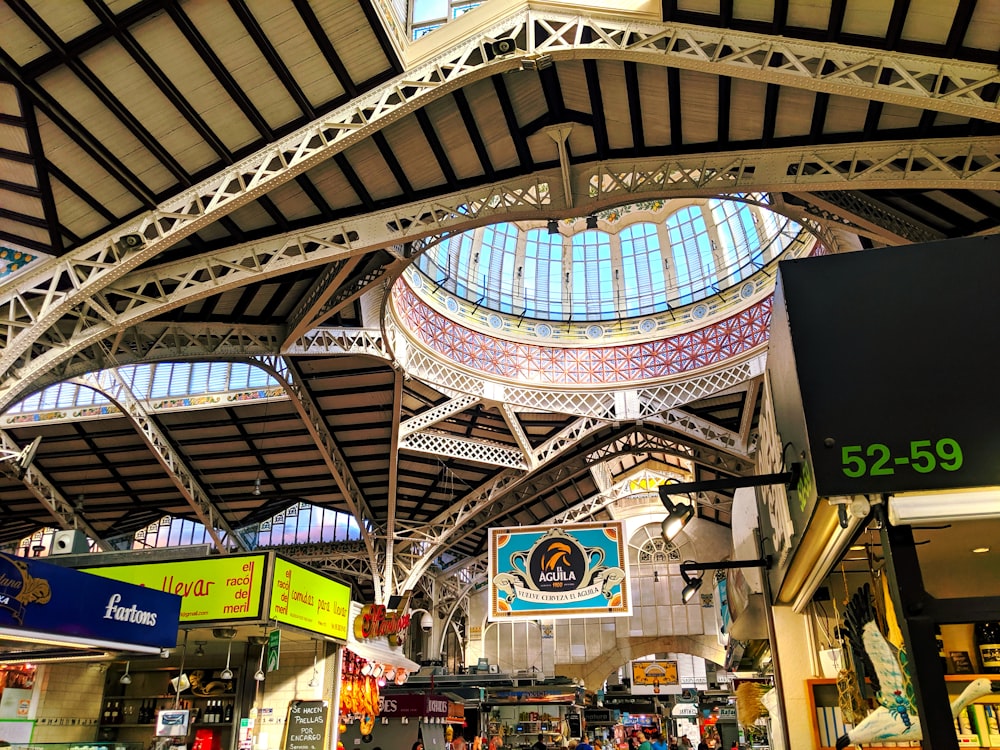Have you ever thought about living in a beautiful port city that looks into the Mediterranean Sea? If that sounds like the dream, you might want to consider moving to Valencia, Spain.
Moving to Valencia is a great idea for anyone looking to live in a city with beautiful architecture and a love for the arts. Still, relocating to a different city can be difficult. You will need to consider the pros and cons of living in Valencia, Spain, where you will live, how to get a job, and other essential details.
For a smooth transition, this guide gives 9 steps to take note of when moving to Valencia.
1. Learn All About The Good And The Bad When Moving To Valencia
When moving to a new country, learn about a city’s good and bad sides are essential. It prepares you for what to expect, allows you to make plans accordingly, and will make the overall transition easier. Below are the things you will need to consider before deciding to move to the Spanish City of Valencia.
The Good
Valencia Is Gamma-level World City
According to the Globalization and World Cities Research Network, Valencia, Spain, is a Gamma-level World City. This means that it connects smaller regions to the world economy. Living in a world city gives you access to a better economy, job opportunities and infrastructures, and a better quality of life.
Cost Of Living Is Lower Than You Think
The cost of living in Valencia is considerably lower than in other major cities in Spain. This means that you will be able to find housing for a lower price. Commodities and public transport are also cheaper. It is considered to only be 8th in expense rankings in the country.
Valencia Is A Green City
Valencia plans to be Europe’s “Green Capital” by 2024. This means that the city is actively creating plans to adopt more green policies, increasing sustainability, and by extension, improving the quality of life of every citizen.
The Bad
The Weather Can Get Difficult
This largely depends on the weather you are accustomed to in your home country. But you will need to know that Valencia only gets about 40 or so days of rain in a year, and days can get very humid. July and August can get very hot, and some locals might even go north for some relief.
The Streets Tend To Get Crowded During Tourist Season
Valencia is a beautiful city, and with that comes the allure for tourists. In Valencia, the term “March Madness” is very real, and droves of people will come and visit. But, if you like the hustle and bustle of a vibrant city, this will likely be a Pro rather than a Con!
2. Pick The Right Place To Live In And Call Home
Choosing the right neighbourhood to live in is very important. You must consider the type of daily life you want to lead. Do you want to be near the city centre? Do you like the quiet suburbs? Or do you prefer to be closer to the sea? How much commuting will you be doing every day? When choosing a neighbourhood to settle in, always think about these things to make the right choice when you want to find apartments. Below are some of the excellent neighbourhoods in Valencia and what they are known for.
Ruzafa is located just south of the city centre and is perfect if you want to be part of the city life. If you frequent cafes, restaurants, and shops and having a little fun in the night scene is your idea of a good time, this place is your best bet.
Ciutat Vella is divided into a history-centred north side and a busy south side; there’s everything for everyone. So, if you want a healthy mix, you might want to look around here.
Barrio del Carmen is inside Ciutat Vella in the northern most part. This neighbourhood deserved a special mention because of its relation to history, the narrow cobblestone roads, and the overall feel it evokes. If you want to live closest to art and history, this is where you should be.
El Botanic is perfect for people who want to see more greenery and prefer a quieter outdoor lifestyle. It is named after a botanical garden in the district that you might frequent if you choose to live here.
3. Familiarise Yourself With How To Navigate Public Transportation
Valencia’s low-cost public transportation is very accessible. Serving the city are 60 bus lines, 5 metro lines and 4 tram lines. You can also find 180 metropolitan bus routes that run throughout the city and 6 commuter trains.
To make things even easier for bus passengers, an EMT Valencia App is available for download. It has schedule and map information that will be valuable as you get to know your way around the city.
If you’d like to get a little fresh air and exercise, about 150km of bike lanes are running throughout the city.
4. Find Job Opportunities To Further Your Career In Valencia
Valencia is the 4th largest economy in Spain, so you can expect that there are a lot of opportunities that you can take advantage of. The economy of Valencia is geared more toward the service sector. It makes up to 84% of the work opportunities for the workforce. Most expats work in the Education and Hospitality industry since Valencia is a known tourist spot.
Other industries that are also very good for other expats are trade, tourism, finance, and the industrial sector. However, even though there are jobs available for English speakers, there might be a language barrier. So, it will open up many new doors if you learn how to speak Spanish.
5. Read Up On The Cost Of Living in Valencia And Make A Budget
The cost of living is not as high as you might think for a gamma-level world city. Based on recent estimates, a single person will require about 650 EUR (656 USD) monthly for living expenses, excluding rent. The cost can go up to 2,300 EUR (2330 USD) for a family of four.
As with most cities, rent will take the biggest chunk of your monthly budget. In Valencia, a single apartment will cost anywhere from 500 to 1,000 EUR ( 506 to 1013 USD) depending on how close you are to the city centre and if you live in upscale neighbourhoods. The further you get away from the city centre, the lower property prices will usually be.
For small families looking for a place to stay, an apartment with three rooms will be anywhere from 700 to 1,500 EUR (709 to 1520 USD).
While still finding your footing, the best way to adjust to the cost of living is to open up a local bank account, make a budget and stick to it. Find the best places to source fresh and local food. Get better deals on utilities such as your phone, internet, and private health insurance, and always take a stroll rather than a cab when you can.
6. Get To Know The Local Culture And Traditions
Living in Valencia means getting to know the Mediterranean way of life. The beach, the food, and the traditions all shape day-to-day life in Valencia. It will be best for you to get to know the local culture and traditions so you can better relate to and get to know your neighbours. Here are some of the most well-known festivals and cultural trends you should look for.
Las Fallas is an annual celebration to commemorate Saint Joseph. It spans five days from the 15th to 19th of March and is celebrated with fireworks, parades, costumes, and a lot of fun! The star is, of course, the Fallas, large wooden sculptures that would adorn the streets throughout the celebration. At the end of the festival, a gigantic bonfire is made to burn the Falles called La Crema.
La Tomatina is probably one of the most famous festivals worldwide. Thanks to the striking visual of red tomatoes flooding the streets, La Tomatina started in the 1940s and is a festival with no religious connection but purely out of fun and entertainment. Through the years, it attracted more and more participants until it was recognised as a Festivity of International Tourist Interest.
Cabalgata de Los Reyes Magos / Epifanía might seem more of a kids-centred festival. Still, it’s also a celebration of the Three Kings and the gifts that they bring. The celebration includes parades, floats, costumes, candy, and gifts!
Nochebuena and Nochevieja, also known as Christmas and New year, these celebrations are popular all over the world and are also very prominent here in Valencia. You can enjoy local carols, delicacies, drinks, and even light-hearted games!
7. Discover And Taste The Local Flavours
As we’ve mentioned, Mediterranean life is embedded into the culture of Valencia, and there’s perhaps nothing more definitive about culture than food. Based on seafood, vegetables, and meat, Valencia offers a gastronomic trip that you will not want to miss. Their rice-based dishes, known worldwide, are something you will surely return to. Check out this list of must-try staples!
Paella is a traditional Valencian dish originally made from rice with chicken and rabbit, though some variations include seafood. It is easily identifiable by its signature yellow hue, thanks to Saffron.
Clóchinas or Mediterranean mussels. They are only in season for a few months a year, so better grab any chance you get!
Arros Negre is a variation of the Paella, but instead of the bright yellow, Arros Negre uses squid ink, giving it its distinctive dark colour.
Fideuà is made from fish, cuttlefish, and shellfish, mixed with hollow pasta.
Horchata is a beverage made from sweetened tiger nuts.
8. Take In The Scenery Of Tourist Spots And Top Attractions
When you’ve fully settled in Valencia, hit the town and see why this region’s tourist industry is booming. The seaside setting, the pleasantly warm air, countless museums, and the gorgeous architecture make for an excellent backdrop for many afternoons of adventure. Here’s a list of some beautiful places for you to visit:
Ciutat de les Arts i les Ciències, or City of Arts and Sciences, is a cultural and architectural complex featuring amazing, modern buildings. There are gardens where you can relax, interactive museums, an aquarium, an opera house, and a concert venue.
Plaza de la Reina is one of the city’s most lively and upbeat parts. With a Cathedral to the side that prominently features the bell tower El Micalet, Plaza de la Reina is a go-to destination for anyone who wants a good time in one of the many cafes and shops that dot the area. Valencia
La Lonja is a Unesco World Heritage site and one of Europe’s most well-known civil gothic buildings.
Jardines del Turia, or Turia Gardens, was once a riverbed many years ago. Today it is frequented by families and patrons for its many green spaces, playgrounds, and proximity to the Turia River. Due to it crossing the city centre, it is popular for most cyclists and runners who want to squeeze in an hour of exercise.
Bioparc València, or the Bioparc Zoo, is a 10-hectare zoo that the local government of Valencia owns. It features many exotic animals and employs what they call Zooimersion, which uses natural elements rather than metallic railings to separate the animals from people.
Valencia Institute of Modern Art if you are a fan of modern art, you’ll probably spend a lot of time gazing at the exhibits. Aside from the art, the museum also houses many workshops, lectures, and temporary exhibitions if you catch them.
9. Engage With A Professional Moving Company Like Sanelo For A Smooth Move
Moving abroad can have a weighty toll, but Sanelo makes moving to new cities smoother. Our team will help with your relocation to Valencia and enrol you into shipment protection.
For more information, don’t hesitate to call or email us, and one of our representatives will walk you through the process and everything you need to prepare.
Conclusion On Moving To Valencia
The cost of living in Valencia is lower than in other Spanish cities, yet you still get a high quality of living, beautiful scenery, and world-class cuisine right at your doorstep. You know the Mediterranean breeze is calling for you; what are you waiting for?!
If you want to move to Spain but are not sure which city yet, check out these articles on Barcelona, Marbella, and Madrid.
Frequently Asked Questions About Moving To Valencia
Do People In Valencia Speak English?
Yes, people in Valencia do speak English, especially in the city centres. However, if you are trying to find employment, it would be wise to learn the language and speak Spanish as it will open more opportunities for you.
How Is The Expat Community In Valencia?
Valencia is a very tourist-friendly city and thus has become a favourite for many expats to call their home and settle down in. If you cannot find specific communities near you, try to go online as there are several online forums or Facebook groups available about expat life. They also do meet-ups and outdoor activities that you can attend. This could also be a great way to learn Spanish.
What Is The Currency In Valencia?
The currency used in Spain, and by extension in Valencia, is Euros (EUR or €). When moving to Valencia, ensure that you have already exchanged your money for the local currency to make any transaction smoother.
Is Valencia A Safe Place To Live?
Yes, Valencia is very safe. Violent and petty crime rates are low. Valencia is a gamma-level world city. You can expect a level of quality of life. As long as you are careful, you should be able to live comfortably with the locals in Valencia.




